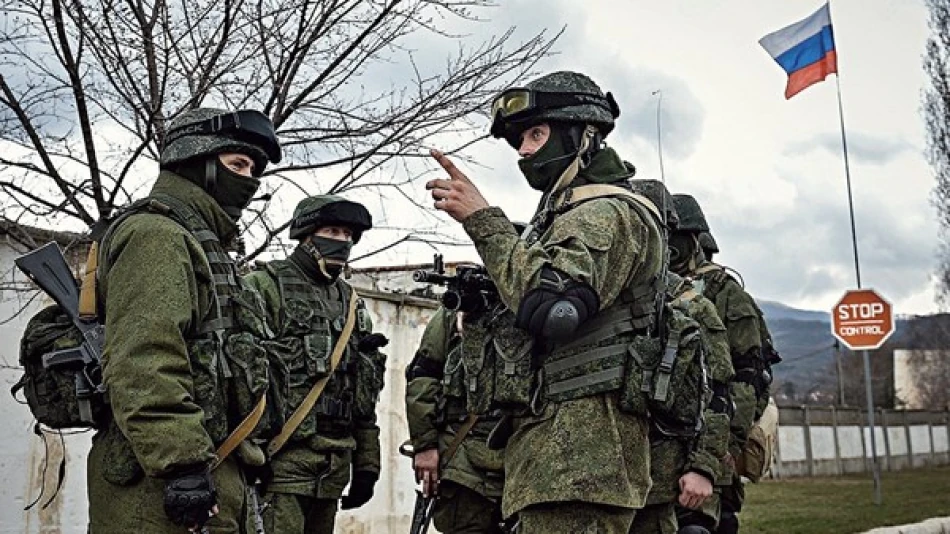
Russia Achieves Significant Advances in Ukraine after Over a Year of Conflict
Russia Accelerates Ukrainian Territorial Gains as Trump-Putin Summit Looms
Russian forces achieved their largest single-day territorial advance in Ukraine in over a year this week, capturing more than 110 square kilometers in just 24 hours—a gain that previously required six days to accomplish. The accelerated momentum comes as President Trump prepares to meet Vladimir Putin in Alaska, potentially reshaping the conflict's trajectory at a critical juncture when Ukraine's eastern defenses appear increasingly strained.
Unprecedented Daily Gains Signal Strategic Shift
According to analysis from the Institute for the Study of War, Russian forces on August 12 seized territory at a pace not witnessed since late May 2024. This dramatic acceleration represents a fourfold increase in territorial acquisition compared to the previous 365-day period, with Russia now controlling approximately 6,100 square kilometers captured over the past year.
Ukrainian President Volodymyr Zelensky acknowledged that Russian "groups" had advanced nearly 10 kilometers in certain eastern front sectors, confirming the scope of Ukraine's defensive challenges. The rapid gains suggest either weakening Ukrainian resistance, improved Russian tactical coordination, or both—factors that could fundamentally alter the conflict's momentum.
Donetsk Region: The Decisive Battlefield
Strategic Concentration Pays Dividends
The Donetsk region has emerged as Russia's primary avenue of success, accounting for 70% of all territorial gains achieved in 2024. Russian control in this eastern province has expanded from 62% a year ago to 79% as of August 12, demonstrating sustained pressure on a concentrated front rather than dispersed operations.
This focused approach mirrors successful military doctrines employed in previous conflicts, where concentrated force application often proves more effective than broad-front advances. Russia's strategy appears designed to create cascading defensive failures rather than pursuing symbolic victories across multiple sectors.
Critical Urban Targets in Crosshairs
Russian forces continue their prolonged assault on Pokrovsk, a campaign that has persisted since their capture of Bakhmut in May 2023. The advance also threatens Dobropillia, creating a potential domino effect that could compromise Ukraine's remaining strongholds in the region.
Most significantly, these gains position Russian forces to threaten Sloviansk and Kramatorsk—the last two major cities under Kyiv's control in Donetsk. These urban centers serve as crucial logistical and command hubs for Ukrainian operations, and their potential loss would represent a strategic catastrophe for Ukraine's eastern defense architecture.
Geopolitical Timing and Summit Implications
The timing of Russia's accelerated gains is hardly coincidental. With the Trump-Putin summit scheduled for Alaska, Moscow appears to be maximizing its negotiating position through battlefield achievements. Historical precedent suggests that territorial control often translates directly into diplomatic leverage during peace negotiations.
This dynamic resembles patterns observed in previous conflicts where parties sought to optimize their positions before anticipated diplomatic engagements. Russia's recent gains could serve as both a demonstration of military capability and a bargaining chip in potential future negotiations.
Military and Economic Implications
Despite representing only 1% of Ukraine's pre-conflict territory, the recent advances carry disproportionate strategic weight. The accelerating pace of Russian gains—from requiring six days to achieve 110 square kilometers to accomplishing this in 24 hours—suggests either Ukrainian defensive degradation or enhanced Russian operational effectiveness.
For international observers and policymakers, these developments raise critical questions about the sustainability of current support strategies and the potential need for either escalated assistance or diplomatic alternatives. The mathematical progression of territorial losses, if maintained, could fundamentally alter the conflict's trajectory within months rather than years.
Russia now controls approximately 19% of Ukrainian territory through complete or partial occupation, establishing facts on the ground that will likely influence any future political settlement regardless of diplomatic outcomes.
Most Viewed News

 Layla Al Mansoori
Layla Al Mansoori






